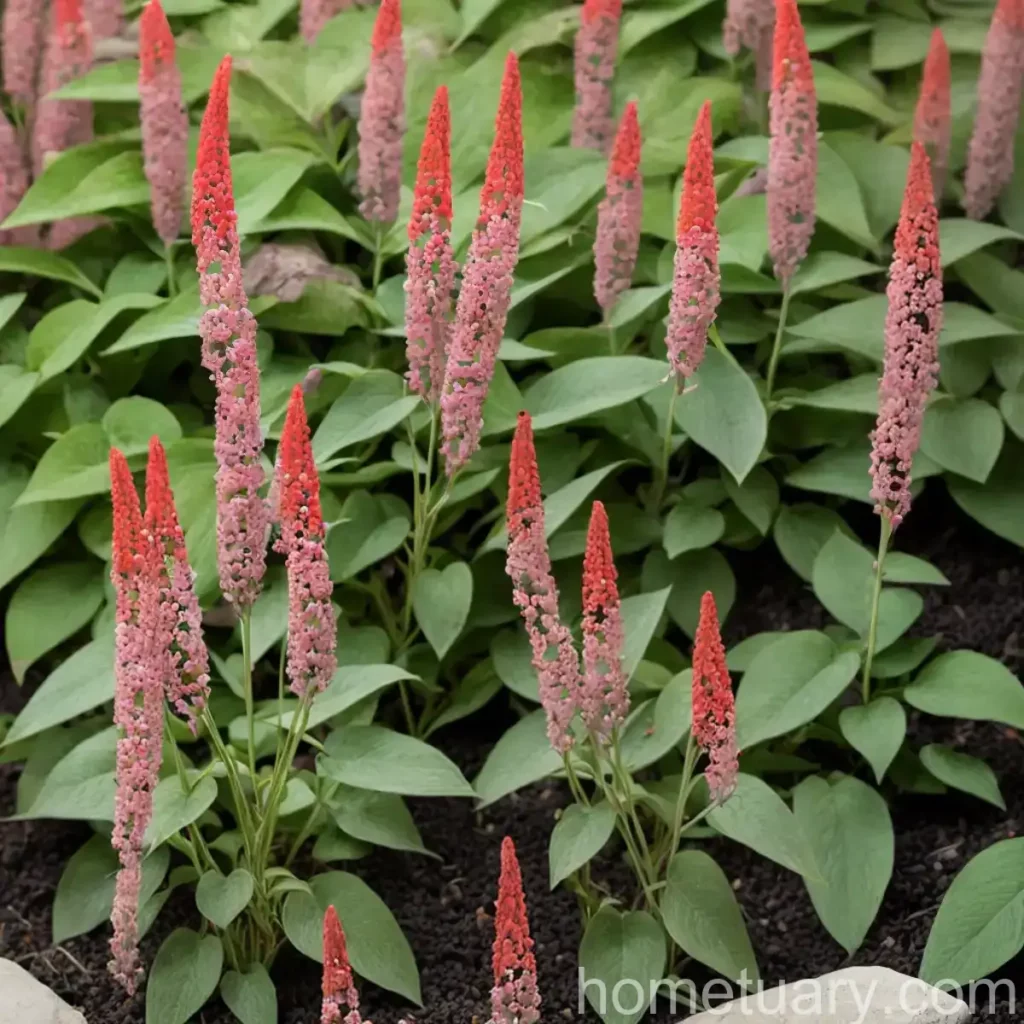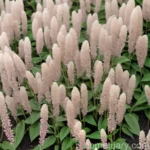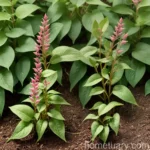Mountain Fleece (Persicaria amplexicaulis ‘Firetail’): A Comprehensive Guide
Introduction
Mountan fleece, scientifically known as Persicaria amplexicaulis ‘Firetail,’ is a remarkable perennial plant that adds beauty and vibrancy to any landscape. Its ornamental foliage and striking flowers make it a popular choice among gardeners. In this comprehensive guide, we will explore all aspects of the mountain fleece plant, from its cultural requirements to its uses, maintenance, and much more. Whether you are a seasoned gardener or a beginner, this guide will equip you with the knowledge to cultivate and care for mountain fleece effectively.
What is Mountain Fleece (Persicaria amplexicaulis ‘Firetail’)?
Mountain fleece, or Persicaria amplexicaulis ‘Firetail,’ is a herbaceous perennial that belongs to the Polygonaceae family. This plant is native to the Himalayas, where it thrives in cool, mountainous regions. It is characterized by its lance-shaped green leaves and dense, elongated spikes of small, vibrant red flowers that bloom from midsummer to early autumn. The striking and long-lasting flower display of ‘Firetail’ makes it a popular choice for adding color and interest to gardens, borders, and naturalistic landscapes.
Mountain fleece is known for its resilient nature and ability to withstand diverse environmental conditions. Its adaptability and low-maintenance requirements make it a valuable addition to any garden setting. In the following sections, we will delve into the various aspects of caring for and cultivating this beautiful plant, including its cultural requirements, uses, maintenance, and more.
Key Takeaways – Mountain Fleece (Persicaria amplexicaulis ‘Firetail’)
Before we embark on our in-depth exploration of the mountain fleece plant, let’s take a moment to highlight some key takeaways that will guide our discussion:
- Cultural Requirements: Understanding the specific cultural needs of mountain fleece, including water, sunlight, fertilizer, soil, and pruning.
- Uses: Exploring the versatile uses of Persicaria amplexicaulis ‘Firetail’ in garden landscapes, including its ornamental value and potential medicinal uses.
- Propagation: Learning about the different methods of propagating mountain fleece to expand its presence in a garden or landscape.
- Container Gardening: Exploring the suitability of mountain fleece for container gardening and the best practices associated with container cultivation.
- Common Diseases and Pests: Identifying potential diseases and pests that may affect mountain fleece, along with effective management strategies.
- Fun Facts: Discovering some interesting and lesser-known facts about Persicaria amplexicaulis ‘Firetail’ that can deepen our appreciation for this beautiful plant.
Now, let’s delve into the details of each of these key takeaways to gain a comprehensive understanding of mountain fleece and how to cultivate it successfully.
Cultivating Mountain Fleece (Persicaria amplexicaulis ‘Firetail’)
Water
Proper watering is crucial for the health and vitality of mountain fleece plants. While they generally prefer consistently moist soil, it is important to avoid overwatering, as this can lead to root rot and other issues. On the other hand, allowing the soil to dry out completely can cause stress and negatively impact the plant.
Tips for watering mountain fleece:
– Water deeply but infrequently to encourage deep root establishment.
– Monitor the soil moisture regularly, especially during hot and dry periods.
– Consider using a soaker hose or drip irrigation system to provide even and consistent moisture to the plants’ root zone.
Sunlight
Mountain fleece thrives in locations with partial to full sunlight. While it can tolerate some shade, it generally performs best when exposed to ample sunlight. When grown in shady conditions, the plant may become leggy and produce fewer flowers.
Sunlight requirements for mountain fleece:
– Aim to provide at least 6-8 hours of sunlight per day for optimal growth and flowering.
– In hot climates, providing some afternoon shade can prevent excessive stress on the plants.
Fertilizer
Fertilizing mountain fleece plants can promote healthy growth and abundant flowering. A balanced, slow-release fertilizer applied in the spring can provide essential nutrients for the growing season. Additionally, organic amendments such as compost and well-rotted manure can improve the overall soil fertility and support the plant’s nutrient needs.
Fertilizing tips for mountain fleece:
– Apply a balanced fertilizer with an N-P-K ratio of 10-10-10 or similar in early spring, following the recommended application rates.
– Avoid excessive application of high-nitrogen fertilizers, as this can lead to lush foliage at the expense of flower production.
Soil
Well-draining, fertile soil is ideal for cultivating mountain fleece. The plant thrives in soil that retains moisture without becoming waterlogged. Amending the soil with organic matter, such as compost or peat moss, can improve its structure and water retention capabilities.
Soil considerations for mountain fleece:
– Aim for a slightly acidic to neutral soil pH in the range of 6.0-7.0.
– If the native soil is heavy or compacted, consider adding perlite or coarse sand to enhance drainage.
Pruning
Pruning mountain fleece is essential for maintaining its shape, promoting bushier growth, and extending the flowering period. Regular deadheading of spent flowers can encourage continuous blooming and prevent the formation of seed heads, which may inhibit further flowering.
Pruning and deadheading tips for mountain fleece:
– Use clean, sharp pruners to remove spent flower spikes and any damaged or diseased foliage.
– Conduct a rejuvenation pruning in late winter or early spring to remove old, woody stems and stimulate new growth from the base of the plant.
Propagating Mountain Fleece (Persicaria amplexicaulis ‘Firetail’)
Division
One of the most common methods of propagating mountain fleece is through division. This involves separating the plant’s rhizomes and replanting them to establish new growth. Division is typically performed in the early spring or fall, when the plant is not actively blooming.
Steps for dividing mountain fleece:
1. Dig up the mature mountain fleece plant, taking care to preserve the root system.
2. Gently separate the clumps into smaller sections, ensuring that each division has healthy roots and several shoots.
3. Replant the divided sections in prepared soil, water thoroughly, and provide appropriate care to support their establishment.
Stem Cuttings
Propagating mountain fleece from stem cuttings can be a rewarding and effective way to create new plants. Softwood cuttings taken in spring or early summer have the best chance of rooting successfully. This method allows for the production of genetically identical clones of the parent plant.
Propagation steps using stem cuttings:
1. Select healthy, non-flowering stems and cut 4-6 inch sections just below a leaf node.
2. Remove the lower leaves, leaving 2-3 leaves at the top, to reduce moisture loss and encourage root development.
3. Dip the cut end in a rooting hormone powder and insert the cutting into a well-draining rooting medium.
4. Provide bottom heat and consistent moisture to facilitate the development of roots.
Seed Propagation
While mountain fleece can be grown from seeds, this method is less common due to the time it takes for the plants to reach maturity and bloom. However, if you wish to grow mountain fleece from seeds, it is important to provide a cold stratification period of 4-6 weeks before sowing them in a well-prepared seed-starting mix.
Tips for seed propagation of mountain fleece:
– Sow the seeds in trays or containers, lightly covering them with the growing medium.
– Keep the soil consistently moist and maintain a warm, consistent temperature for germination.
– Transplant the seedlings into individual pots once they have developed several true leaves.
Container Cultivation of Mountain Fleece (Persicaria amplexicaulis ‘Firetail’)
Mountain fleece can thrive in container gardens, making it a versatile option for those with limited garden space or for those wanting to create portable displays of color and texture. When growing mountain fleece in containers, it is essential to provide appropriate care to ensure the plants’ health and vigor.
Considerations for growing mountain fleece in containers:
– Select large, well-draining containers to accommodate the plant’s root system and prevent waterlogged soil.
– Use a high-quality, well-aerated potting mix that provides both moisture retention and good drainage.
– Place the containers in a location that receives adequate sunlight, and monitor the soil moisture regularly to prevent drying out.
Uses of Mountain Fleece (Persicaria amplexicaulis ‘Firetail’)
Ornamental Value
Mountain fleece is primarily prized for its ornamental value, featuring stunning floral displays and attractive foliage. Its long-lasting, vibrant flowers make it a standout feature in borders, woodland gardens, and cottage-style landscapes. The plant’s ability to attract pollinators, such as butterflies and bees, adds to its appeal as a valuable asset in wildlife-friendly garden designs.
Medicinal Uses
In addition to its aesthetic appeal, some species within the Persicaria genus have historical uses in traditional medicine. While specific medicinal uses of Persicaria amplexicaulis ‘Firetail’ are not extensively documented, it is worth exploring the potential therapeutic properties of this plant under the guidance of a qualified herbalist or healthcare professional.
Common Diseases and Pests of Mountain Fleece (Persicaria amplexicaulis ‘Firetail’)
Disease Diagnosis
Mountain fleece is generally resistant to most common plant diseases, but certain environmental conditions or cultural practices can make it susceptible to issues such as powdery mildew, leaf spot, or root rot. Regular monitoring of the plant’s foliage and overall health can aid in the early detection of any disease issues.
Common diseases affecting mountain fleece:
– Powdery mildew: Identified by a white, powdery coating on the leaves, powdery mildew can be managed by improving air circulation and avoiding overhead watering.
– Leaf spot: Characterized by the presence of dark spots or lesions on the foliage, leaf spot can be controlled by removing and disposing of affected plant parts and applying fungicidal sprays if necessary.
– Root rot: This can occur in soil that is consistently waterlogged, leading to the degradation of the plant’s root system. Improving soil drainage and avoiding overwatering can prevent root rot.
Common Pests
While mountain fleece is relatively resistant to pest infestations, it may occasionally attract certain pests that can affect its overall health and appearance.
Potential pests that may affect mountain fleece:
– Aphids: These small, sap-feeding insects can cluster on the plant’s new growth, causing distortion and stunted growth. A strong blast of water or insecticidal soap can help control aphid populations.
– Caterpillars: Certain caterpillar species may feed on the foliage of mountain fleece, leading to visible damage. Handpicking caterpillars or using bacillus thuringiensis (Bt) can offer effective control.
Botanist’s Tips for Growing Mountain Fleece (Persicaria amplexicaulis ‘Firetail’)
Planting Depth and Spacing
When planting mountain fleece, ensure that the crown of the plant is level with the soil surface to prevent rot or excessive drying out. Space multiple plants approximately 18-24 inches apart to allow for adequate air circulation and future growth.
Mulching and Weed Control
Applying a layer of organic mulch around mountain fleece plants can help retain soil moisture, suppress weed growth, and insulate the roots during extreme temperatures. Regularly monitor the mulch layer to prevent it from directly contacting the plant stems, as this can create favorable conditions for pests and diseases.
Winter Care
In regions with cold winters, providing protective winter care for mountain fleece is essential. Apply a thick layer of mulch over the root zone to insulate the plants and protect them from temperature fluctuations. Avoid cutting back the foliage until the following spring, as the dried stems provide additional protection during the winter months.
Wildlife Habitat Considerations
Mountain fleece has the potential to attract beneficial wildlife, such as pollinators and birds, to the garden. When incorporating this plant into a landscape design, consider its role in supporting local ecological diversity and the habitats of indigenous species.
Fun Facts about Mountain Fleece (Persicaria amplexicaulis ‘Firetail’)
- Mountain fleece is named for its resemblance to a soft, woolly textile, particularly during the flowering season when the dense spikes of flowers create a cozy, textured appearance.
- The species name “amplexicaulis” refers to the plant’s distinctive leaf arrangement, where the base of the leaf wraps around the stem, appearing as if it is “clasping” the stem.
- In some cultures, mountain fleece is associated with traditional folk practices and beliefs, where it is considered a symbol of endurance, strength, and resilience.
Now that we have explored the cultural requirements, uses, maintenance, and fun facts about mountain fleece, let’s take a look at some additional resources for further information and inspiration.
Links to External Resources
- Royal Horticultural Society (RHS) – Persicaria amplexicaulis ‘Firetail’
- Missouri Botanical Garden – Persicaria amplexicaulis ‘Firetail’ Plant Profile
- Gardening Know-How – Growing and Caring for Mountain Fleece Plants
With the wealth of information and insights provided in this comprehensive guide, you are well-equipped to cultivate and care for mountain fleece with confidence and success. Whether you are drawn to its ornamental charm, its potential uses, or its role in supporting biodiversity, mountain fleece (Persicaria amplexicaulis ‘Firetail’) offers a captivating addition to various garden settings. Embrace the beauty and resilience of this remarkable perennial plant, and let it flourish in your landscape with its distinctive charm and vibrant presence.















